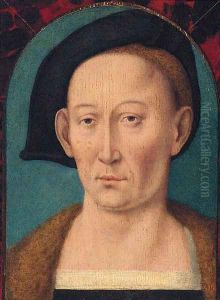George Pencz Paintings
George Pencz was a German engraver and painter, known for his work in the Renaissance style. Born in 1500 in the town of Westheim near Bad Windsheim, Bavaria, his artistic career was largely influenced by the cultural flourishing of the time, particularly the work of Albrecht Dürer.
Initially, Pencz was apprenticed to Dürer in Nuremberg, where he gained a comprehensive education in the arts. He worked closely alongside fellow apprentices Hans Sebald Beham and Barthel Beham. Together, the three were known as the 'Little Masters', due to their small, yet exquisitely detailed engravings. Around 1525, Pencz and the Beham brothers were expelled from Nuremberg for sharing heretical views, which were likely related to the radical ideas of the Reformation that were spreading across Europe at the time.
Despite this setback, Pencz's reputation as an artist continued to grow. He traveled to Italy, where he was influenced by the works of the Italian Renaissance, particularly the Venetian school. Upon his return to Germany, he incorporated the Italian influence into his art, creating a unique blend of Northern Renaissance precision and Italianate sensibility.
Pencz excelled in portrait painting and was appointed court painter by the electors of Saxony in the 1540s. His portraits are characterized by their clarity, attention to detail, and subtle coloring. As an engraver, he produced a wide range of subjects, including religious themes, allegories, and classical motifs, all marked by technical finesse and elegance.
George Pencz died in 1550 under somewhat mysterious circumstances during a trip to Leipzig. His work remained influential and was appreciated for its harmonious blend of Northern and Southern European artistic traditions.
